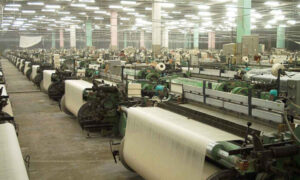
Bangladesh, a South Asian country known for its resilient workforce and thriving manufacturing sector, has evolved into a dominant force in the global export economy. In recent years, Bangladesh’s biggest export—the Ready-Made Garment (RMG) industry—has skyrocketed, placing the country second only to China in the global clothing export market. But what has fueled this remarkable success?
In this in-depth look, we’ll explore Bangladesh export data, identify top Bangladesh export products, and provide insight into the trends shaping this export-driven economy. Whether you’re a trader, importer, or industry observer, understanding this landscape is essential for tapping into the potential of this South Asian export powerhouse.
The Foundation of Bangladesh’s Export Success
The roots of Bangladesh’s garment industry date back to the late 1970s and early 1980s, when the country began investing heavily in textile infrastructure. Thanks to supportive government policies, abundant low-cost labor, and trade agreements with major markets, Bangladesh carved out a niche in the global apparel market.
Today, Bangladesh’s biggest export, ready-made garments, contributes more than 80% of the country’s export revenue. In 2024–2025, total export earnings are projected to reach around $45 billion—a nearly 10% increase from the previous year, according to updated Bangladesh export data.
Top Bangladesh Export Products in 2025
Let’s dive into the key Bangladesh export products driving the country’s economy in 2025:
1. Ready-Made Garments (RMG)
By far the biggest export of Bangladesh, the RMG sector accounts for roughly 46.74% of total exports. High global demand, particularly from markets like the US, UK, Germany, France, and Italy, has positioned Bangladesh as a preferred supplier of quality, affordable clothing.
2. Jute and Jute Products
Dubbed the “golden fiber,” jute plays a vital role in Bangladesh’s economy. These eco-friendly products—ranging from bags to ropes and canvas—make up around 13.6% of total exports. Major importers include China, India, and Pakistan.
3. Footwear
Footwear has emerged as a promising industry, accounting for 2.5% of total exports. Countries like the Netherlands, India, and South Korea are major buyers, contributing to this sector’s fast-paced growth.
4. Miscellaneous Textiles and Worn Apparel
This category includes curtains, blankets, and recycled clothing, making up about 2.1% of exports. Key markets include the US, Canada, Japan, and Australia.
5. Leather and Animal Gut Products
Accounting for about 1% of exports, this sector benefits from Bangladesh’s abundant raw materials and labor. Germany, Poland, and Spain are among the top destinations for these goods.
Why Bangladesh Is Dominating Global Markets
The answer lies in three words: cost, quality, and labor.
- Low labor costs make Bangladesh’s clothing prices extremely competitive globally.
- Skilled and semi-skilled workforce ensures quality production, drawing international retailers like H&M, Uniqlo, Walmart, and Zara.
- Export-friendly policies and efficient port access have only accelerated growth in trade.
The growing presence of digital infrastructure and automation in manufacturing has also bolstered productivity. This has placed Bangladesh in a strong position to meet rising international demand while maintaining its competitive edge.
International Trade Scope: Beyond Apparel
Although Bangladesh’s biggest export is garments, the country is strategically expanding its trade portfolio to include leather goods, jute products, seafood, pharmaceuticals, and even aerospace components.
Countries looking for diverse, affordable, and scalable sourcing options can find value in Bangladesh’s growing list of export products. Whether you’re analyzing Mexico import data, Liberia Buyers Data, or broader global trends, Bangladesh offers reliable export capabilities that match global demand patterns.
Global Markets Importing Bangladesh Export Products
Here’s where Bangladesh’s export ecosystem truly shines: it’s global. The top buyers include:
- United States – the largest importer of Bangladeshi garments and textiles.
- European Union – a major buyer of apparel, jute, and seafood.
- India and China – big on jute, textiles, and leather.
- Japan, Australia, and Canada – import a diverse range of RMG and seafood products.
While reviewing Mexico export data and Liberia import data, it’s clear that these countries, along with others across Africa and Latin America, are gradually turning to Bangladesh for high-quality, affordable goods.
Reliable Bangladesh Export Data Sources
For those in the business of importing or exploring trade with Bangladesh, accessing accurate Bangladesh export data is crucial. That’s where platforms like Seair Exim Solutions come in. Whether you’re searching for the most recent Bangladesh exporter list, product-wise export volumes, or real-time analytics, Seair provides actionable insights for over 120 countries, including Mexico and Liberia.
From identifying trends to spotting new trade opportunities, reliable trade data empowers businesses to make strategic decisions.
The Road Ahead: Digital Transformation and Diversification
Bangladesh is not content with just being the world’s garment factory. The country is actively investing in:
- Skill development and automation
- ICT and technology exports
- Diversification into pharmaceuticals and renewable energy
- Sustainable manufacturing initiatives
With a target to export $100 billion worth of garments by 2030, the path forward is ambitious but achievable. Given its current trajectory and solid infrastructure, Bangladesh’s position as a top exporter will likely expand further.
Final Thoughts
Bangladesh has risen from modest beginnings to become a formidable player in global trade. Through strategic investments, cost advantages, and unwavering commitment to quality, the country has made Bangladesh’s biggest export—ready-made garments—a global necessity. But the story doesn’t end there. The nation’s diversification efforts, supported by accurate Bangladesh export data and expanded export products, are setting the stage for a broader, more sustainable export economy.
If you’re exploring export potential, analyzing Liberia Buyers Data or Mexico import data, or simply seeking opportunities in South Asian markets, Bangladesh should be at the top of your list.





